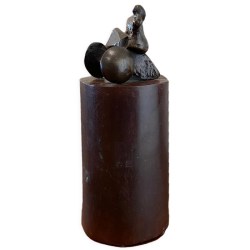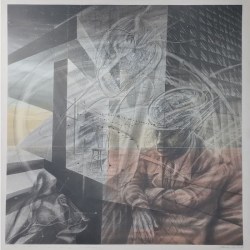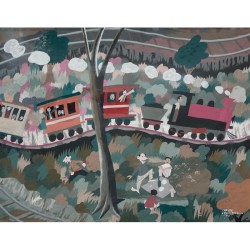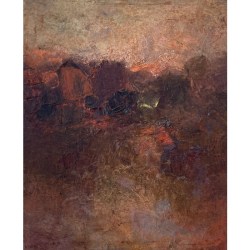Bio
 B. Malaga d. Mougins, painter, sculptor, engraver, ceramist. For many the dominant figure of 20th-century art, Picasso combined an indomitable belief in the individual will with a total scorn for convention. In Barcelona and Paris (1901-4) he made a symbolist beginning with the ‘blue paintings’, attempting to convey by colour and figurative distortion the psychological depth of suffering. Settled in Paris, he moved from this, through a formal exploration of the nude, to a melodramatically anti-naturalist style announced by Le Demoiselesd d’Avignon (1907). The aggressive dislocations of this style, rooted in African art, gave way to a cool investigation of the pictorial gains gathered from fusing different views of a subject into a single image and from flattening surfaces as angular facets. *Cézanne was his master here, *Braque his ally and *Cubism the result. With Braque (1912-14) he simplified the formal range of Cubism and at the same time complicated its relation to the subject by introducing fragment of reality – letters, material, wallpaper. Although his most revolutionary contribution had now been made, he continued (after 1914) to resist habit, his innovations still being influential. He developed a refreshed neo-classicism alongside his Cubism (1915-25), reviving apparently rejected representational values. From 1925 he entered new areas of suggestion, deep and disturbing enough to arouse *Surrealist interest and between 1929 and 1931, helped technically by *González, he made welded sculpture prophetic of the open mode developed later by David *Smith. These experiments led in painting to a marriage of expressive distortion and personal symbolism (with the bull-fight as a central theme) which culminated in Guernica (1937), Picasso’s pictorial assault on Spanish Fascism. Less influential since 1946, Picasso remained in old age obstinately youthful, prodigiously productive and obsessed by his power to invent.
B. Malaga d. Mougins, painter, sculptor, engraver, ceramist. For many the dominant figure of 20th-century art, Picasso combined an indomitable belief in the individual will with a total scorn for convention. In Barcelona and Paris (1901-4) he made a symbolist beginning with the ‘blue paintings’, attempting to convey by colour and figurative distortion the psychological depth of suffering. Settled in Paris, he moved from this, through a formal exploration of the nude, to a melodramatically anti-naturalist style announced by Le Demoiselesd d’Avignon (1907). The aggressive dislocations of this style, rooted in African art, gave way to a cool investigation of the pictorial gains gathered from fusing different views of a subject into a single image and from flattening surfaces as angular facets. *Cézanne was his master here, *Braque his ally and *Cubism the result. With Braque (1912-14) he simplified the formal range of Cubism and at the same time complicated its relation to the subject by introducing fragment of reality – letters, material, wallpaper. Although his most revolutionary contribution had now been made, he continued (after 1914) to resist habit, his innovations still being influential. He developed a refreshed neo-classicism alongside his Cubism (1915-25), reviving apparently rejected representational values. From 1925 he entered new areas of suggestion, deep and disturbing enough to arouse *Surrealist interest and between 1929 and 1931, helped technically by *González, he made welded sculpture prophetic of the open mode developed later by David *Smith. These experiments led in painting to a marriage of expressive distortion and personal symbolism (with the bull-fight as a central theme) which culminated in Guernica (1937), Picasso’s pictorial assault on Spanish Fascism. Less influential since 1946, Picasso remained in old age obstinately youthful, prodigiously productive and obsessed by his power to invent.







